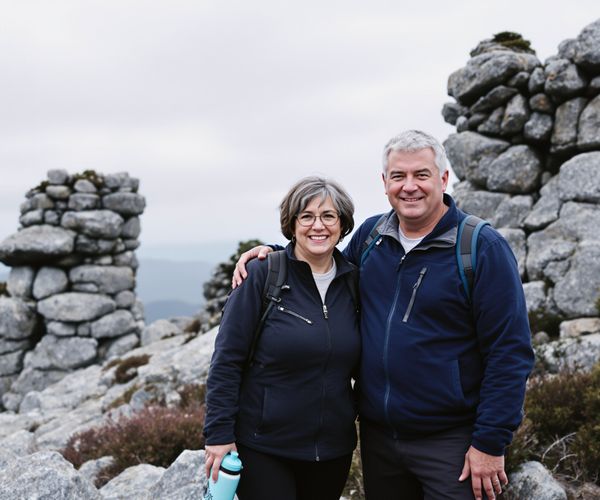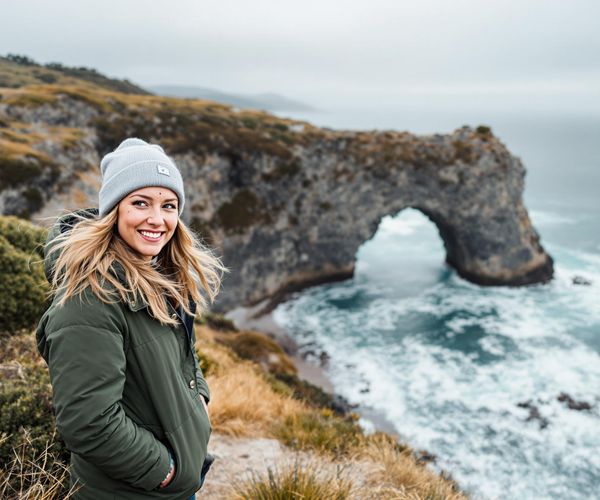
Hobart: The Heart of Tasmania's Wonders
Discover Hobart, Tasmania's charming capital, offering a blend of historic sites, vibrant arts, delectable cuisine, and stunning natural landscapes.
Nestled at the foot of Mount Wellington, Hobart is a city that seamlessly blends history, nature, and modernity. As the capital of Tasmania, it offers a rich palette of experiences for every traveler. Stroll along the historic Salamanca Place, where Georgian sandstone warehouses have been transformed into chic galleries, cafes, and craft shops. Every Saturday, the Salamanca Market bursts into life, with local artisans showcasing their unique products, from handmade crafts to gourmet foods. Hobart's waterfront is a hive of activity, with fishing boats, yachts, and ferries dotting the harbor. Here, you can catch a ferry to the renowned MONA (Museum of Old and New Art), which offers a provocative and immersive art experience. The city's culinary scene is equally vibrant, with a focus on fresh, locally sourced produce. Dine at one of the many waterfront restaurants and enjoy a feast of seafood delicacies, complemented by fine Tasmanian wines. For nature lovers, Hobart serves as the gateway to some of Tasmania's most breathtaking landscapes. A short drive will take you to Mount Wellington, where you can enjoy panoramic views of the city and beyond. The nearby Huon Valley offers lush forests, winding rivers, and charming villages. Whether you're exploring the city or venturing into the wild, Hobart promises an unforgettable adventure.
Local tips in Hobart
- Visit Salamanca Market on a Saturday morning to experience local culture and find unique souvenirs.
- Take the ferry to MONA early to avoid the crowds and have ample time to explore the exhibits.
- Dress in layers when visiting Mount Wellington; the weather can change rapidly.
- Book a table at popular waterfront restaurants in advance, especially during peak tourist season.
- Rent a car to explore the surrounding regions like Huon Valley and Bruny Island for a fuller Tasmanian experience.
Hobart: The Heart of Tasmania's Wonders
Nestled at the foot of Mount Wellington, Hobart is a city that seamlessly blends history, nature, and modernity. As the capital of Tasmania, it offers a rich palette of experiences for every traveler. Stroll along the historic Salamanca Place, where Georgian sandstone warehouses have been transformed into chic galleries, cafes, and craft shops. Every Saturday, the Salamanca Market bursts into life, with local artisans showcasing their unique products, from handmade crafts to gourmet foods. Hobart's waterfront is a hive of activity, with fishing boats, yachts, and ferries dotting the harbor. Here, you can catch a ferry to the renowned MONA (Museum of Old and New Art), which offers a provocative and immersive art experience. The city's culinary scene is equally vibrant, with a focus on fresh, locally sourced produce. Dine at one of the many waterfront restaurants and enjoy a feast of seafood delicacies, complemented by fine Tasmanian wines. For nature lovers, Hobart serves as the gateway to some of Tasmania's most breathtaking landscapes. A short drive will take you to Mount Wellington, where you can enjoy panoramic views of the city and beyond. The nearby Huon Valley offers lush forests, winding rivers, and charming villages. Whether you're exploring the city or venturing into the wild, Hobart promises an unforgettable adventure.
When is the best time to go to Hobart?
Iconic landmarks you can’t miss
MONA
Explore MONA, Tasmania's revolutionary art museum that redefines the boundaries of contemporary and ancient art in a breathtaking setting.
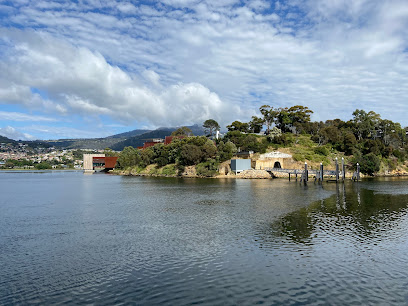
Salamanca Market
Discover the heart of Hobart at Salamanca Market, where fresh produce, handmade crafts, and local culture come together every Saturday.
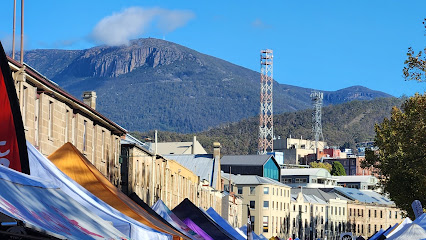
Wellington Park
Explore the natural wonders of Wellington Park, a stunning nature preserve in Tasmania, featuring breathtaking landscapes and rich biodiversity.
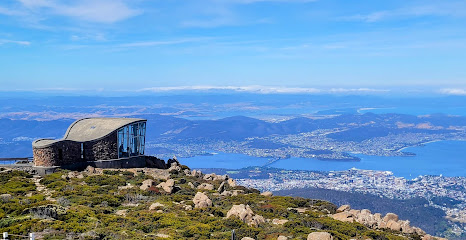
Brooke Street Pier
Discover Hobart's Brooke Street Pier: a lively shopping mall, dining destination, and cultural hub offering stunning waterfront views and local delights.
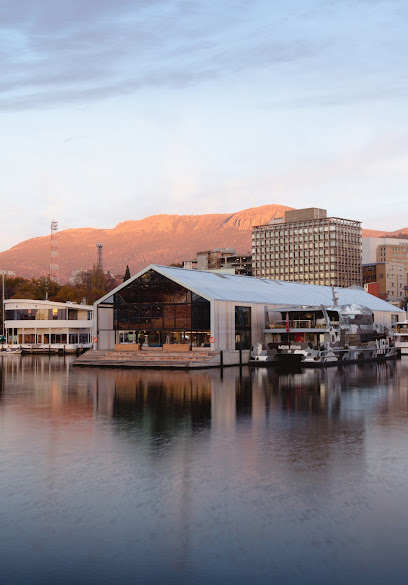
Farm Gate Market
Experience the best of Tasmanian produce and culture at Hobart's lively Farm Gate Market every Sunday.
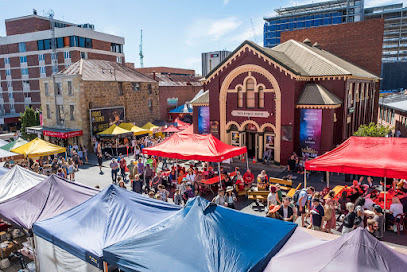
Cascades Female Factory Historic Site
Uncover the stories of convict women at the Cascades Female Factory, a historic site in South Hobart, Tasmania, showcasing resilience and memory.
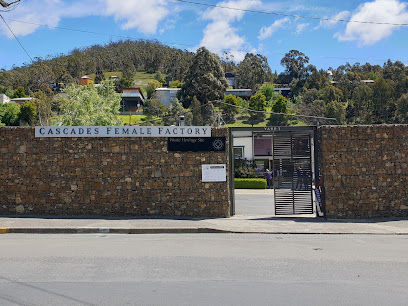
Elizabeth Street Mall
Discover the vibrant shopping and dining experiences at Elizabeth Street Mall, Hobart's premier destination for tourists and locals alike.
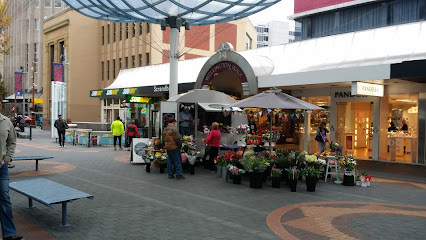
Old Hobart Town
Explore the charm of Old Hobart Town, a living history museum that brings Tasmania's colonial past to life through its stunning recreations and engaging exhibits.
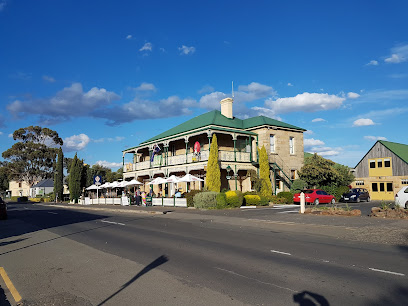
Mövenpick Hotel Hobart
Experience luxury and convenience at Mövenpick Hotel Hobart, your gateway to exploring Tasmania's vibrant culture and stunning landscapes.

St. David's Park
Explore the lush landscapes and historical significance of St. David's Park, Hobart's tranquil oasis filled with beauty and reflection.
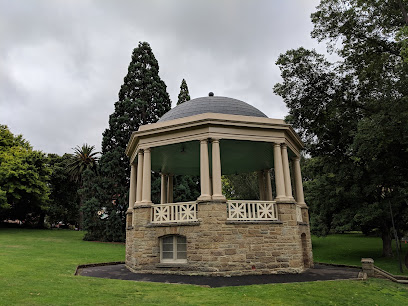
Pinnacle Observation Shelter and Boardwalk
Experience breathtaking views and natural beauty at the Pinnacle Observation Shelter and Boardwalk in Wellington Park, Tasmania.
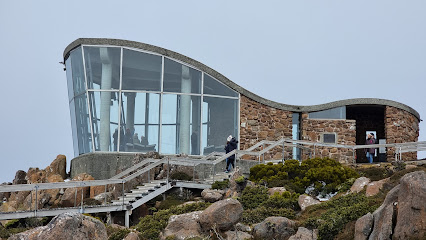
Mona Ferry
Discover the breathtaking ferry ride to MONA, Hobart's renowned art museum, and immerse yourself in Tasmania's stunning landscapes.
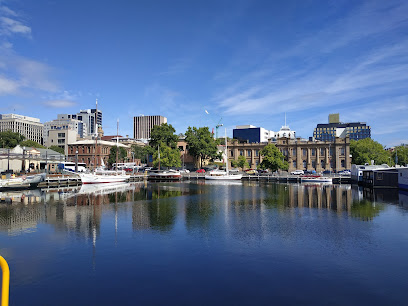
The Shot Tower Historic Site and The Tower Tearoom
Experience the rich history and breathtaking views at The Shot Tower Historic Site and enjoy delightful refreshments at The Tower Tearoom in Taroona.
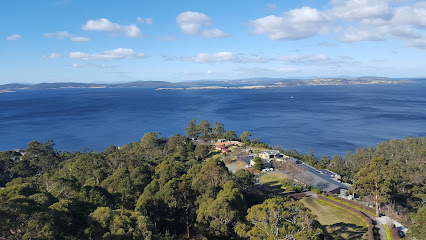
The Henry Jones Art Hotel
Discover the perfect blend of art, history, and luxury at The Henry Jones Art Hotel, a unique destination on Hobart's waterfront.
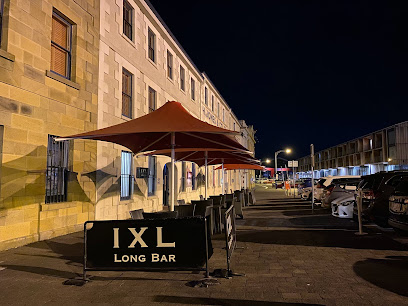
Mawson's Huts Replica Museum
Uncover the legacy of Antarctic exploration at the Mawson's Huts Replica Museum in Hobart, where history and adventure come together.
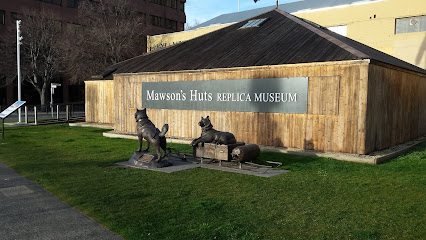
Unmissable attractions to see
MONA
Explore the captivating fusion of art, architecture, and cuisine at MONA, Tasmania's premier museum and cultural attraction.
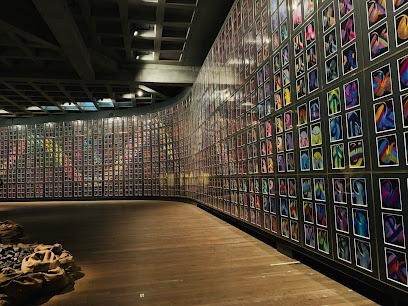
Salamanca Market
Discover the colorful Salamanca Market in Hobart, where local artisans, fresh produce, and gourmet food come together every Saturday for an unforgettable experience.
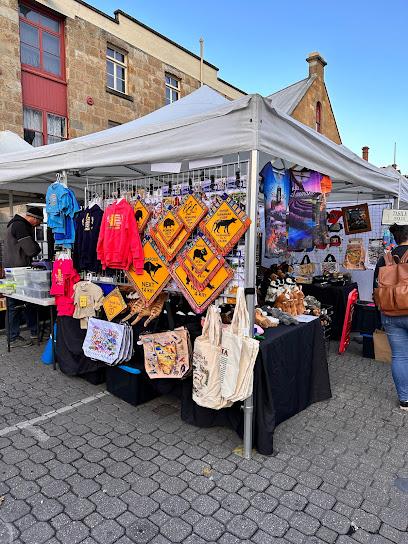
Royal Tasmanian Botanical Gardens
Explore the Royal Tasmanian Botanical Gardens in Hobart, a beautiful sanctuary featuring diverse plant species and breathtaking landscapes.
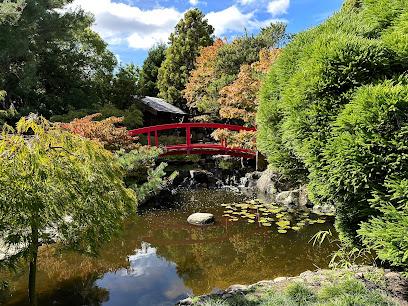
Wrest Point
Discover Wrest Point: A vibrant hub in Sandy Bay, Tasmania, featuring luxurious accommodations, fine dining, a casino, and live entertainment.

The Neck Game Reserve Lookout
Discover the breathtaking views of The Neck Game Reserve Lookout, a stunning destination showcasing Tasmania's natural beauty.
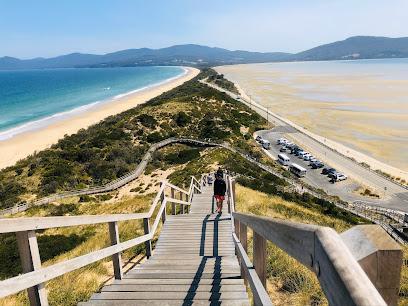
Bonorong Wildlife Sanctuary
Explore Bonorong Wildlife Sanctuary, Tasmania's premier wildlife refuge, supporting conservation while encountering native Australian animals up close.
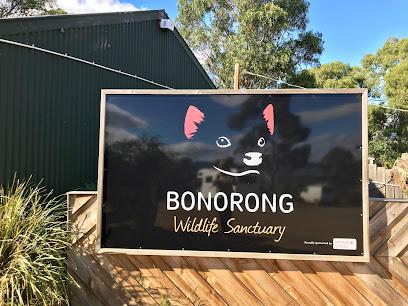
Tasmanian Museum and Art Gallery
Explore Tasmania's rich heritage at the Tasmanian Museum and Art Gallery, showcasing art, culture, and natural history in the heart of Hobart.
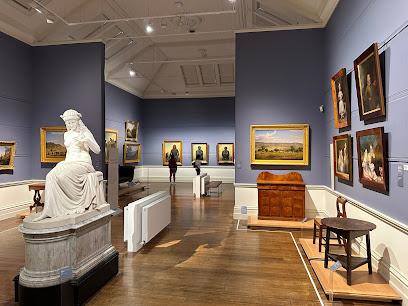
Cascade Brewery Bar
Discover the charm of Tasmania at Cascade Brewery Bar, where history meets flavor in a stunning garden setting.
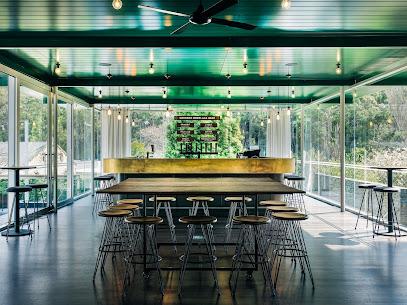
Farm Gate Market
Experience the local flavors of Tasmania at Farm Gate Market, a vibrant farmers' market in Hobart showcasing fresh produce and artisan goods.
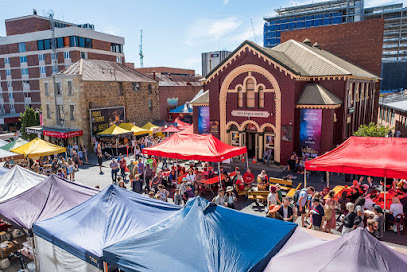
Tasmanian Devil Unzoo
Explore the Tasmanian Devil Unzoo, where wildlife meets conservation in a stunning natural setting in Tasmania.
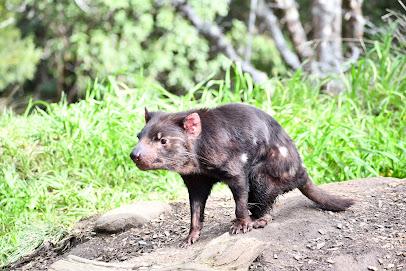
Village Cinemas Hobart
Discover the cinematic treasures of Hobart at Village Cinemas, where film lovers unite for an unforgettable movie experience.

Cascades Female Factory Historic Site
Explore the Cascades Female Factory Historic Site in South Hobart, a UNESCO World Heritage Site that illuminates Tasmania's convict history and women's stories.
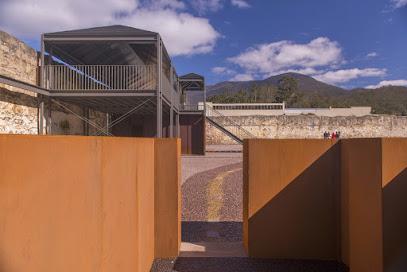
Pennicott Wilderness Journeys
Experience Tasmania's stunning coastlines and wildlife with Pennicott Wilderness Journeys, a top-rated tour operator in Hobart.
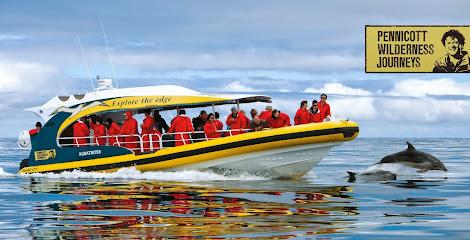
Willie Smith's Apple Shed
Experience the fusion of taste and heritage at Willie Smith's Apple Shed, Tasmania's premier cider destination.
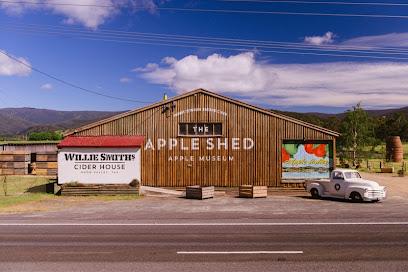
Salmon Ponds and the Museum of Trout Fishing
Experience the serene beauty of Salmon Ponds and the Museum of Trout Fishing, a unique blend of nature and history in Tasmania.
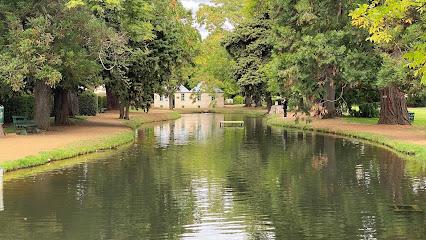
Essential places to dine
Drunken Admiral
Experience exquisite Tasmanian seafood at Drunken Admiral – where fresh flavors meet stunning waterfront views in Hobart.
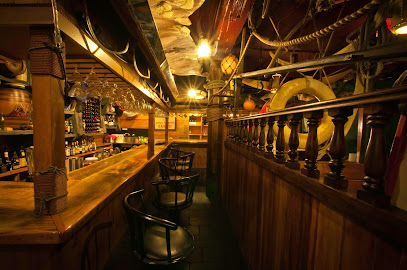
Bar Wa Izakaya
Experience authentic Japanese cuisine in Hobart at Bar Wa Izakaya, where delicious flavors meet vibrant atmosphere.
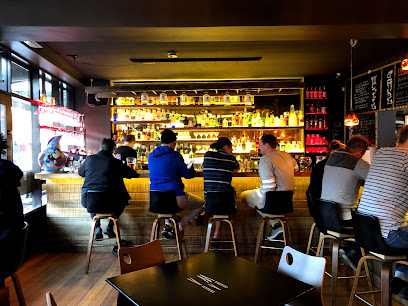
Urban Greek
Experience the essence of Greece at Urban Greek in Hobart—where traditional recipes meet modern dining in a vibrant atmosphere.

Da Angelo Ristorante
Experience authentic Italian cuisine at Da Angelo Ristorante in Battery Point - where every meal is crafted with passion and tradition.
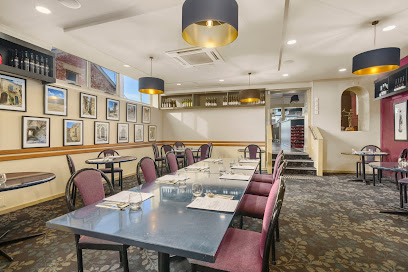
Preachers
Experience the best of Tasmanian cuisine at Preachers - where great food meets lively vibes in the heart of Hobart.
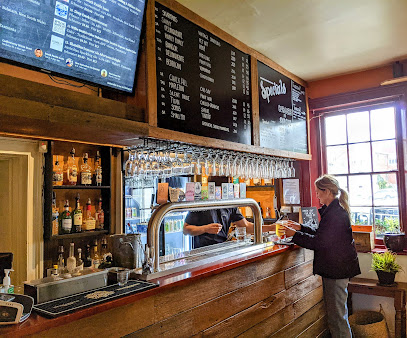
Harbour Lights Cafe
Discover Harbour Lights Cafe in Hobart: where exquisite Italian flavors meet breathtaking waterfront views.

Blue Eye Seafood Restaurant
Experience Tasmanian seafood at its finest with breathtaking waterfront views at Blue Eye Seafood Restaurant in Battery Point.
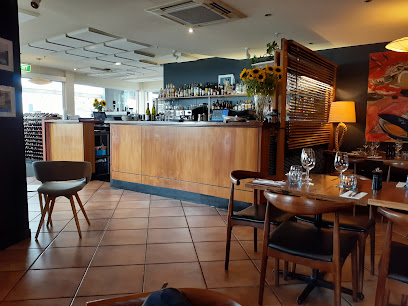
Customs House Hotel Restaurant
Experience authentic Australian flavors at Customs House Hotel Restaurant in Hobart—where delicious food meets breathtaking waterfront views.

Frank Restaurant
Savor modern Australian cuisine at Frank Restaurant in Hobart – where local ingredients meet exceptional flavors in a stunning waterfront setting.
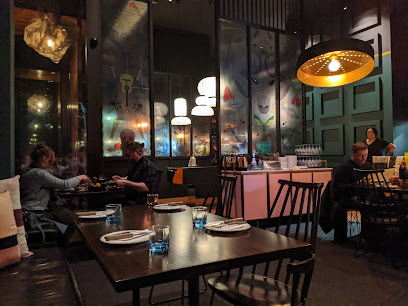
Rockwall Bar and Grill
Experience Tasmanian culinary excellence at Rockwall Bar and Grill - where local flavors meet breathtaking views.

Born In Brunswick
Experience exquisite breakfast and brunch at Born In Brunswick in North Hobart—where local ingredients meet culinary creativity.
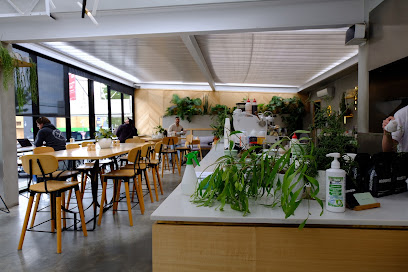
Mures Upper Deck
Discover Mures Upper Deck: Hobart's premier seafood restaurant with stunning harbor views and an unforgettable dining experience.
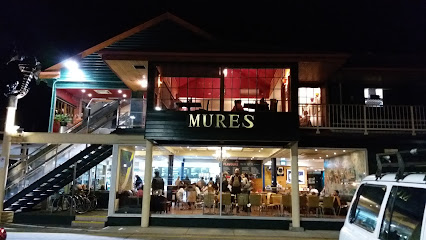
Sawak Cafe
Experience the vibrant flavors of Malaysian cuisine at Sawak Cafe in Hobart - where every dish tells a story.
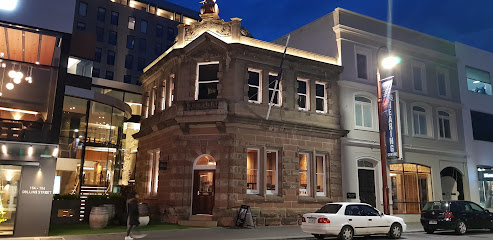
Dandy Lane Cafe
Experience the delightful flavors of Dandy Lane Cafe in Hobart - where breakfast dreams come true amidst cozy surroundings.
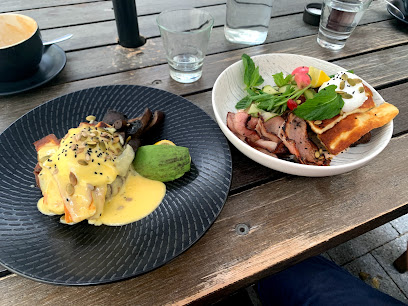
Cultura Espresso Bar & Restaurant
Experience authentic Italian flavors at Cultura Espresso Bar & Restaurant in Hobart, where every meal is a celebration of culinary excellence.
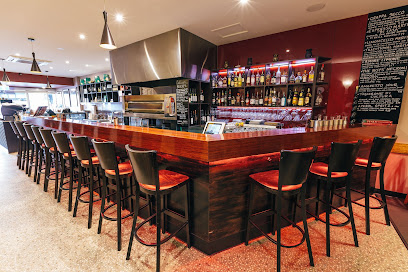
Markets, malls and hidden boutiques
The Cat & Fiddle Arcade
Discover the vibrant Cat & Fiddle Arcade in Hobart, Tasmania, where shopping, dining, and local culture come together in a delightful experience.
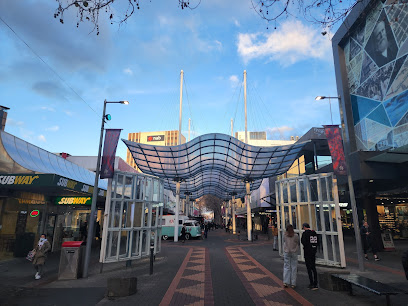
Myer Hobart
Discover the ultimate shopping destination in Hobart with Myer, featuring fashion, homewares, cosmetics, and toys for all ages.
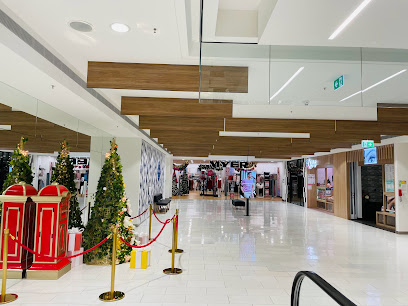
Elizabeth Street Mall
Discover Elizabeth Street Mall in Hobart, a vibrant shopping haven with unique stores, delightful dining, and lively street performances to enrich your travel experience.
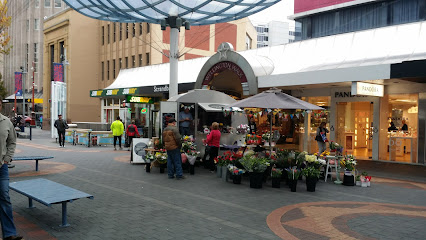
Target Hobart
Explore Target Hobart, your ultimate shopping destination for clothing, homewares, and toys in the heart of Tasmania.

Padmalight
Explore Padmalight in Hobart for unique gifts and books that celebrate Tasmanian culture and creativity.
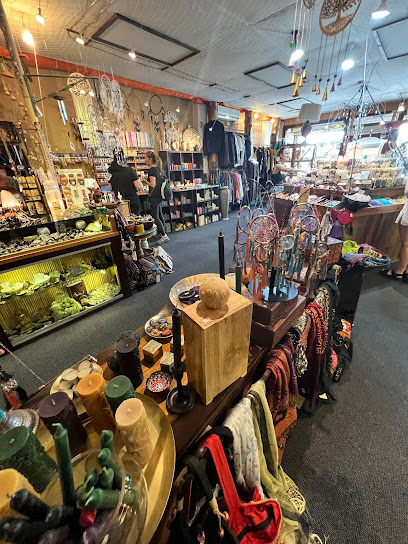
Mawson Sheepskin & Opals
Discover authentic Tasmanian souvenirs at Mawson Sheepskin & Opals, where luxurious sheepskin and stunning opals await every traveler.
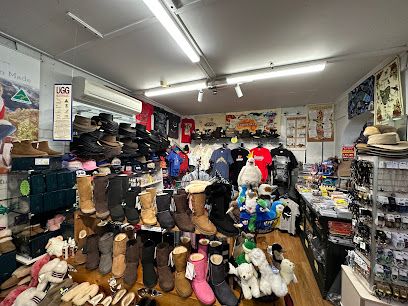
Typo
Explore Typo in Hobart for unique gifts, fashion accessories, and creative stationery that capture the city's vibrant spirit.
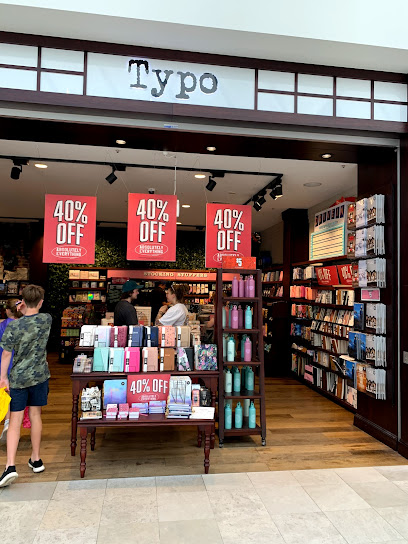
Lily & Dot
Explore the enchanting world of Lily & Dot in Hobart – your go-to destination for exquisite gifts, baby clothing, and unique homewares.
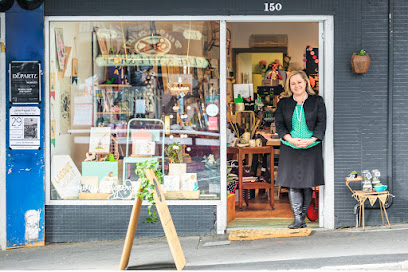
CWA Gift Shop
Explore the CWA Gift Shop in Hobart for unique Tasmanian crafts, gourmet foods, and authentic souvenirs that capture the essence of Tasmania.
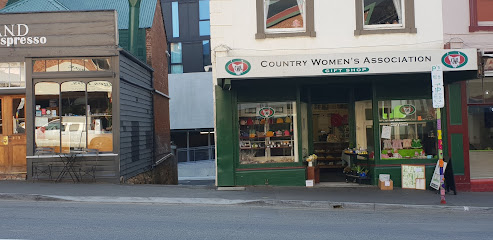
Red Parka
Explore the essence of Tasmania at Red Parka, where local craftsmanship and unique souvenirs come together in a charming Hobart shop.
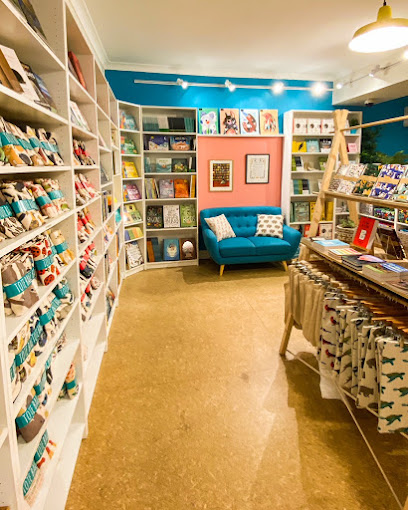
Esplora Fashion
Explore Esplora Fashion in Hobart for unique European-inspired clothing and accessories that elevate your style.
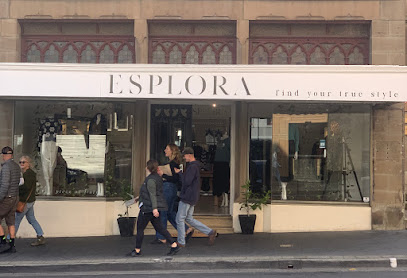
Verde Store Hobart
Explore Verde Store in Hobart for unique homewares, sustainable design, and a touch of Tasmanian charm.
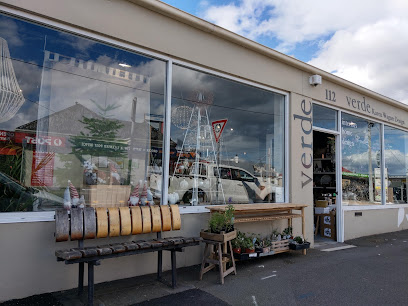
After Eight
Explore After Eight in Hobart for a unique selection of stylish clothing and accessories that capture the essence of Tasmanian fashion.
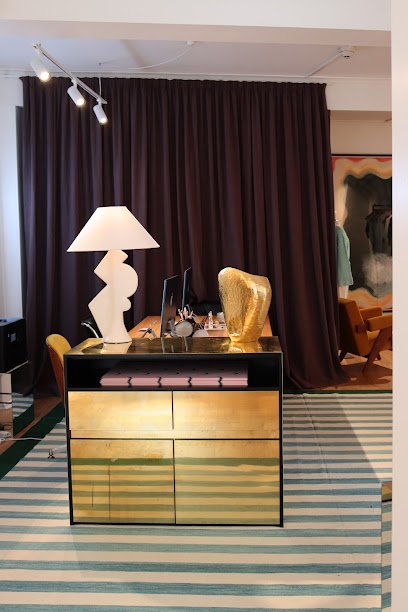
The Hobart Stocking Shop
Explore The Hobart Stocking Shop for a unique collection of women's clothing and accessories, celebrating local fashion in the heart of Hobart.
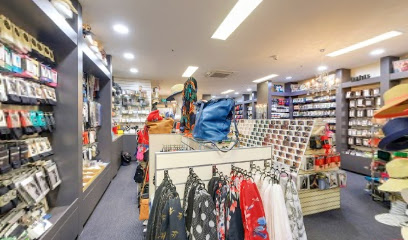
Glue Store Hobart
Explore the vibrant fashion scene at Glue Store Hobart, where trendy styles meet local flair in a unique shopping experience.
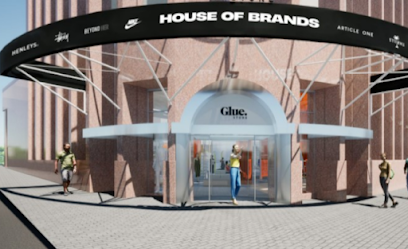
Essential bars & hidden hideouts
In The Hanging Garden
Experience the vibrant atmosphere of In The Hanging Garden, a quintessential Hobart bar and restaurant offering live music and delightful cuisine in a charming setting.
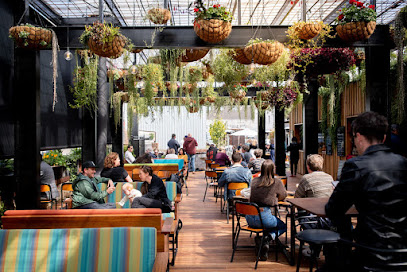
Hope & Anchor Hotel
Discover the culinary delights of Hope & Anchor Hotel in Hobart, a perfect blend of pub culture, exceptional steaks, and local craft beers.

The Den Salamanca
Experience the best of Hobart's nightlife at The Den Salamanca, where exquisite cocktails and delicious cuisine await in a vibrant atmosphere.
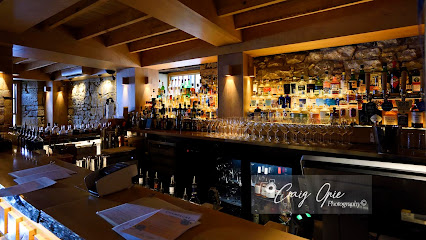
Grape Food and Wine Bar
Experience the best of Tasmanian wines and delightful tapas at Grape Food and Wine Bar, a lively hub for food lovers in Hobart.
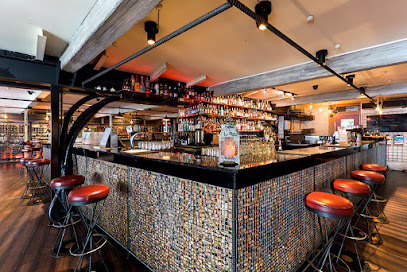
Frogmore Creek Wine Bar
Experience the finest Tasmanian wines and gourmet cuisine at Frogmore Creek Wine Bar, a hidden gem in Hobart's vibrant culinary scene.

Rude Boy
Discover the vibrant charm of Rude Boy, Hobart's top cocktail bar and restaurant, offering a unique dining experience in a lively atmosphere.
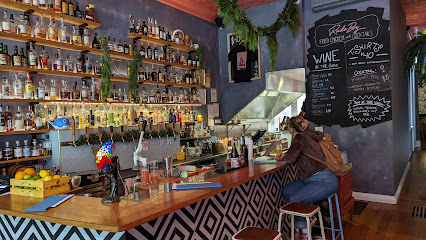
Sonny
Discover the ultimate wine experience at Sonny, Hobart's premier wine bar, featuring a curated selection of local and international wines.
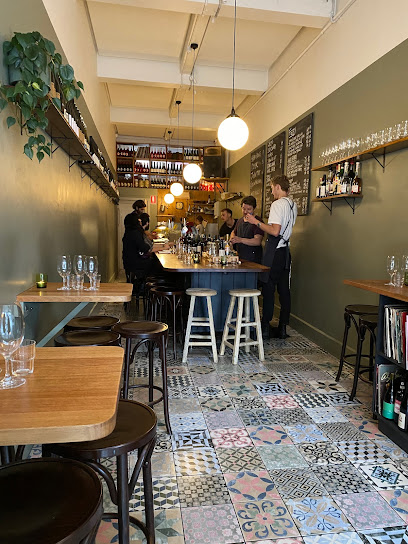
Gold Bar
Discover Gold Bar in Hobart - where exquisite cocktails and a vibrant ambiance create unforgettable nightlife experiences.
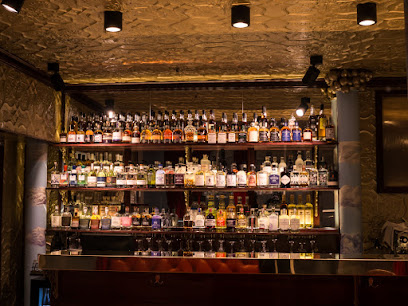
Post Street Social
Discover the charm of Hobart at Post Street Social, a waterfront bar and restaurant offering local flavors and stunning views.
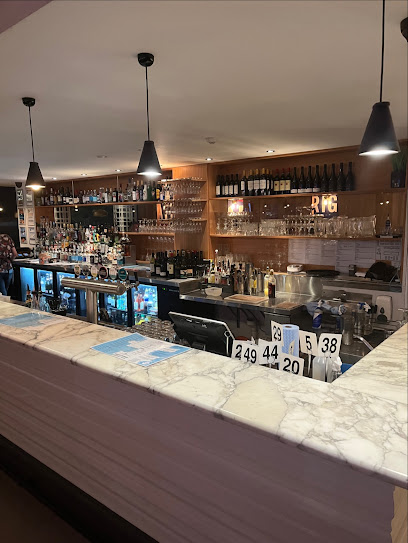
Grinners Dive Bar
Discover the lively atmosphere and delicious tacos at Grinners Dive Bar in Hobart, where great food meets vibrant nightlife.
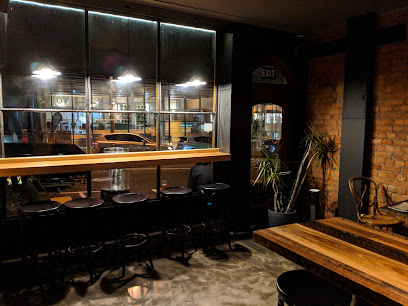
Evolve Spirits Bar
Discover the heart of Tasmania at Evolve Spirits Bar, where local spirits and a vibrant atmosphere create an unforgettable experience.
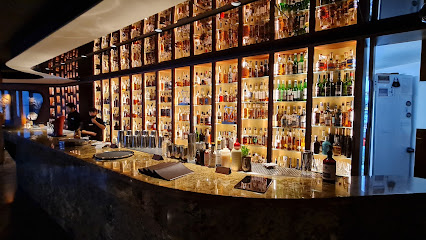
IXL Long Bar
Discover IXL Long Bar in Hobart - a vibrant cocktail bar and live music venue offering crafted drinks and a lively atmosphere for all.
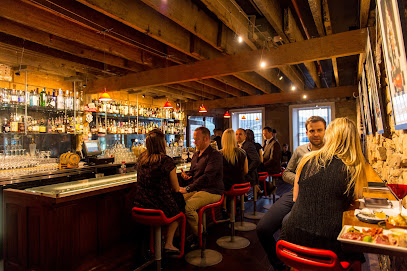
Institut Polaire
Experience the unique blend of a bar and restaurant at Institut Polaire, featuring exquisite cocktails and a curated wine selection in Hobart.
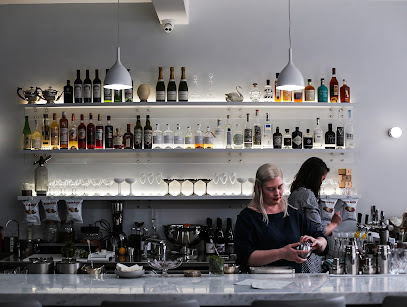
Pablos Cocktails and Dreams
Discover the lively ambiance of Pablos Cocktails and Dreams, where exceptional cocktails and live music create unforgettable nights in Hobart.
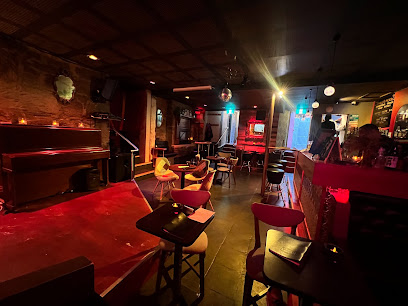
Twisted Lime
Experience the vibrant nightlife of Hobart at Twisted Lime, where every sip tells a story of Tasmania's rich bar culture.
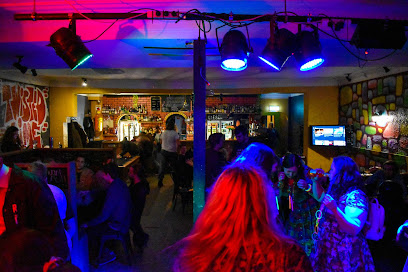
Travel experiences inspired by this city
Explore more travel diariesLocal Phrases
-
- HelloG'day
[g'day] - GoodbyeCatch ya later
[catch ya later] - YesYeah
[yeah] - NoNah
[nah] - Please/You're welcomePlease/No worries
[please/no worries] - Thank youCheers
[cheers] - Excuse me/SorryPardon me/My bad
[pardon me/my bad] - How are you?How's it going?
[how's it going?] - Fine. And you?Good. How about yourself?
[good. how about yourself?] - Do you speak English?You speak English?
[you speak English?] - I don't understandI don't get it
[I don't get it]
- HelloG'day
-
- I'd like to see the menu, pleaseI'll check out the menu, thanks
[I'll check out the menu, thanks] - I don't eat meatI'm vego
[I'm vego] - Cheers!Cheers!
[cheers!] - I would like to pay, pleaseI'll settle the bill, thanks
[I'll settle the bill, thanks]
- I'd like to see the menu, pleaseI'll check out the menu, thanks
-
- Help!Struth!
[struth!] - Go away!Bugger off!
[bugger off!] - Call the Police!Ring the coppers!
[ring the coppers!] - Call a doctor!Get a quack!
[get a quack!] - I'm lostI'm all turned around
[I'm all turned around] - I'm illI'm crook
[I'm crook]
- Help!Struth!
-
- I'd like to buy...I'm keen to buy...
[I'm keen to buy...] - I'm just lookingJust browsing, cheers
[just browsing, cheers] - How much is it?What's the damage?
[what's the damage?] - That's too expensiveThat's a bit steep
[that's a bit steep] - Can you lower the price?Any chance of a discount?
[any chance of a discount?]
- I'd like to buy...I'm keen to buy...
-
- What time is it?What's the time?
[what's the time?] - It's one o'clockIt's one on the dot
[it's one on the dot] - Half past (10)Half ten
[half ten] - MorningMornin'
[mornin'] - AfternoonArvo
[arvo] - EveningEvenin'
[evenin'] - YesterdayYesty
[yesty] - TodayToday
[today] - TomorrowTomorra
[tomorra] - 1One
[one] - 2Two
[two] - 3Three
[three] - 4Four
[four] - 5Five
[five] - 6Six
[six] - 7Seven
[seven] - 8Eight
[eight] - 9Nine
[nine] - 10Ten
[ten]
- What time is it?What's the time?
-
- Where's a/the...?Where's the...?
[where's the...?] - What's the address?What's the addy?
[what's the addy?] - Can you show me (on the map)?Can you point it out (on the map)?
[can you point it out (on the map)?] - When's the next (bus)?When's the next bus?
[when's the next bus?] - A ticket (to ....)A ticket (to ....)
[a ticket (to ....)]
- Where's a/the...?Where's the...?
History of Hobart
-
Before European settlement, the area now known as Hobart was inhabited by the Mouheneener people, a band of the South East tribe. The indigenous people had a deep connection with the land and practiced sustainable hunting, gathering, and fishing along the Derwent River. Their rich cultural heritage included intricate storytelling, rock art, and ceremonial traditions that have endured through the centuries.
-
Hobart was founded in 1804 as a penal colony by Lieutenant Colonel David Collins. Originally named Hobart Town, it was established as a strategic military and trading port. The early settlers faced harsh conditions, including food shortages, native resistance, and isolation. Despite these challenges, Hobart began to grow as a center of commerce and agriculture.
-
The Black War (1820s–1832) was a period of violent conflict between British colonists and the indigenous Tasmanian people. The conflict resulted in significant loss of life and displacement of the indigenous population. Governor George Arthur established the 'Black Line' in 1830, a coordinated effort to capture the remaining indigenous people, which ultimately led to their removal to settlements like Wybalenna. This period is a dark chapter in Hobart's history, reflecting the broader impact of colonization on Aboriginal cultures.
-
In the 19th century, Hobart became a bustling hub for the whaling industry, attracting ships and sailors from around the world. The port's strategic location and deep waters made it ideal for docking large vessels. The maritime industry brought wealth and growth to Hobart, leading to the development of infrastructure, including wharves, warehouses, and shipyards. This era left a lasting legacy on the city's architecture and economy.
-
As a penal colony, Hobart received thousands of convicts transported from Britain. The convict labor was instrumental in building much of the city's early infrastructure, including roads, bridges, and public buildings. The Cascades Female Factory, a significant site, housed female convicts and their children. Many of these historic sites are now preserved as part of Hobart's rich convict heritage, offering insight into the lives of those who helped shape the city.
-
With the federation of Australia in 1901, Hobart became the capital of the state of Tasmania. The city continued to grow and modernize, with advancements in transportation, industry, and public services. Hobart's unique blend of old-world charm and modern amenities began to attract tourists, artists, and scholars, contributing to its vibrant cultural scene.
-
In recent decades, Hobart has experienced a cultural renaissance, driven by a burgeoning arts scene and culinary innovation. The Museum of Old and New Art (MONA), opened in 2011, has become a world-renowned cultural institution, attracting visitors from across the globe. The city's annual festivals, such as Dark Mofo and the Taste of Tasmania, celebrate its rich history, diverse culture, and natural beauty.
Hobart Essentials
-
Hobart is accessible via Hobart International Airport (HBA), which is approximately 17 kilometers from the city center. The airport serves domestic flights from major Australian cities like Sydney, Melbourne, and Brisbane, as well as limited international flights. Alternatively, you can reach Hobart by ferry from Melbourne to Devonport and then drive or take a bus to Hobart. Another option is to drive from other parts of Tasmania, as Hobart is well-connected by road.
-
Hobart offers various modes of transportation to help you get around. Metro Tasmania operates a network of buses that cover the city and surrounding areas. Taxis and rideshare services like Uber are readily available. For a more flexible option, consider renting a car, especially if you plan to explore beyond the city. Cycling is also popular, with bike lanes and scenic routes available.
-
The official currency in Hobart is the Australian Dollar (AUD). Credit and debit cards are widely accepted, and ATMs are available throughout the city. Contactless payments and mobile payment options like Apple Pay and Google Pay are also commonly used. It's advisable to carry some cash for smaller establishments and markets where card payments may not be accepted.
-
Hobart is generally a safe city for tourists. However, it's wise to take standard precautions. Avoid walking alone at night in poorly lit areas and keep an eye on your belongings in crowded places. Areas like North Hobart and Battery Point are safe for tourists, but it's always good to stay aware of your surroundings.
-
In case of emergency, dial 000 for police, fire, or medical assistance. Hobart has several hospitals, including the Royal Hobart Hospital, which offers comprehensive medical services. Pharmacies are also available for minor health issues. Ensure you have travel insurance that covers medical emergencies.
-
Fashion: Do dress in layers as the weather can be unpredictable, and wear comfortable walking shoes. Avoid overly revealing clothing when visiting religious or historical sites. Religion: Do respect local customs and traditions, especially in religious sites. Public Transport: Do have your payment ready when boarding buses and be courteous to drivers. Don't eat or drink on public transport. Greetings: Do greet people with a friendly 'hello' or a handshake. Australians are generally informal but polite. Eating & Drinking: Do try local foods and wines. Don't tip; tipping is not a common practice in Australia.
-
To experience Hobart like a local, visit the Salamanca Market on Saturdays for fresh produce, crafts, and local delicacies. Take a stroll through the historic Battery Point neighborhood and enjoy the colonial architecture. Attend a local event or festival, such as the Taste of Tasmania or Dark Mofo, to immerse yourself in the local culture. For a unique experience, hike up Mount Wellington for panoramic views of the city and surrounding areas.
Trending Landmark in Hobart
-
MONA
-
Salamanca Market
-
Wellington Park
-
Brooke Street Pier
-
Farm Gate Market
-
Cascades Female Factory Historic Site
-
Elizabeth Street Mall
-
Old Hobart Town
-
Mövenpick Hotel Hobart
-
St. David's Park
-
Pinnacle Observation Shelter and Boardwalk
-
Mona Ferry
-
The Shot Tower Historic Site and The Tower Tearoom
-
The Henry Jones Art Hotel
-
Mawson's Huts Replica Museum
Nearby Cities to Hobart
-
Things To Do in Melbourne
-
Things To Do in Canberra
-
Things To Do in Sydney
-
Things To Do in Adelaide
-
Things To Do in Kangaroo Island
-
Things To Do in Byron Bay
-
Things To Do in Invercargill
-
Things To Do in Queenstown
-
Things To Do in Gold Coast
-
Things To Do in Surfers Paradise
-
Things To Do in Wanaka
-
Things To Do in Brisbane
-
Things To Do in Dunedin
-
Things To Do in Noosa
-
Things To Do in Timaru









